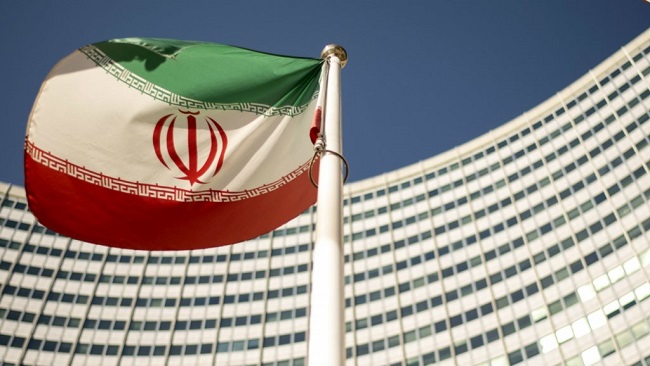Iran answers Trump’s maximum pressure with maximum resistance
Asphyxiated by US sanctions, Iran has been scaling back its commitments under the 2015 nuclear deal in a bid to demonstrate the ineffectiveness of US President Donald Trump’s maximum pressure policy.
Over the past few months, Tehran has been steadily turning its back on the terms of the Joint Comprehensive Plan of Action (JCPOA), better known as the 2015 Iran nuclear deal. On Thursday, November 7, uranium enrichment resumed at Iran’s underground Fordo facility, marking the fourth phase of a disengagement strategy that began on May 8 in response to the unilateral US withdrawal from the Iran nuclear deal.
The announcement came as Iran cancelled the accreditation of an International Atomic Energy Agency (IAEA) inspector who was prevented from entering the Natanz nuclear facility last week.
Iran alleged the inspector tested positive for suspected traces of explosive nitrates. The IAEA, which is the UN’s nuclear watchdog, disputed Tehran’s claim.
Tensions between Tehran and Washington have been rising since Trump pulled out of the nuclear deal last year despite IAEA assurances that Iran was in compliance with the terms of the multilateral agreement. Iran has warned that it will resume nuclear activities outside the JCPOA following successive waves of crippling US sanctions that has blocked Iran’s oil exports, damaged its currency and its access to products such as medicines.
On Thursday morning, Iran’s atomic energy agency said it had successfully injected uranium gas into 1,044 centrifuges at Fordo in the presence of IAEA inspectors. The centrifuges had previously spun empty under the terms of the 2015 deal.
“This is an important decision, the Iranian authorities are taking a new step forward, because with the Fordo site, which has more than 1,000 centrifuges, Iran has just significantly increased its uranium enrichment capacity,” said Siavosh Ghazi, an Iran correspondent at FRANCE 24’s sister radio station, RFI. “This means that Tehran is determined to go even further to accelerate its nuclear programme, since enrichment capacity has reached the level of before the 2015 agreement,” he added.
The US, for its part, criticised the decision, warning of grave consequences. “Iran’s expansion of proliferation-sensitive activities raises concerns that Iran is positioning itself to have the option of a rapid nuclear breakout,” US Secretary of State Mike Pompeo said in a statement. “It is now time for all nations to reject this regime’s nuclear extortion and take serious steps to increase pressure.”
Pompeo’s statement made no reference to Trump’s decision to leave the deal in May 2018, which sparked the crisis.
Crossing yellow, but not red, lines
The Trump administration’s maximum pressure strategy was designed to force Iran to return to the table to negotiate a new deal. But it has failed to pressure the country to negotiate a new, more comprehensive and binding agreement, while mediation attempts, particularly by France, have remained unsuccessful.
“By gradually disengaging from certain clauses of the 2015 agreement, Iran is seeking to get the US to ease sanctions, and then, perhaps, Tehran will say it is ready to discuss again,” explained FRANCE 24’s international affairs expert Bruno Daroux. “It’s a defensive strategy, a kind of maximum resistance to the policy of maximum pressure led by the Trump administration.”
But while Tehran has been steadily crossing yellow lines, it has not yet crossed the 5% uranium enrichment red line.
IAEA spokesman Behrouz Kamalvandi told reporters on Thursday that Fordo’s centrifuges will gradually increase in capacity until Saturday morning, when they will produce uranium enriched to 4.5%. This is the maximum enrichment rate to which Iran has limited itself since July, above the 3.67% ceiling set by the 2015 Iran nuclear deal.
Uranium enriched up to 5% is used as fuel for nuclear power plants, while 20% enriched uranium is used to fuel research reactors. Weapons-grade uranium needs to be enriched to 90% or more. But paradoxically, it is much faster, through leverage, to increase from 5% to 20% and from 20% to 90% than from 0 to 3.67%.
A response to Europe’s inaction
Tehran’s maximum resistance strategy is also aimed at forcing European signatories to the Iran nuclear deal (France, Britain and Germany together with the EU) to keep their promises of compensation for US sanctions.
Iran is frustrated by the slow implementation of INSTEX (Instrument in Support of Trade Exchanges), a barter mechanism created by the European signatories earlier this year to enable European companies to do business with Iran without using the US dollar.
The Trump administration has warned EU nations not to use INSTEX and European businesses have avoided participating in it, fearing US penalisation.
“This escalation is, of course, a response to US sanctions, which are hitting the Iranian economy hard, but it is also a response to the inaction of the Europeans who promised Tehran it would take action a year ago to offset these sanctions and allow the country to export its oil and restore its banking relationship with the rest of the world,” explained Ghazi.
“The position of the Europeans is not easy,” explained Daroux, “The Iranians are asking them, as well as Russia and China, to help them get around the US sanctions, but they cannot oppose the pressure from the Trump administration without compromising their own economic interests in the United States,” he added.
On November 5, some Iranian journalists were taken to the Natanz research site, where “new centrifuges, even more modern and with much larger capacities than those currently in use — up to 50 times larger to enrich uranium — were shown to them”, revealed Ghazi, which showed that Iran was engaged in a very tough standoff with the West.
In early September, Iran hinted that it would fully comply with the 2015 agreement only if it’s able to sell its oil and receive the money from these sales without hindrance. President Hassan Rouhani gave Europeans another two-month deadline, in an attempt to save the deal, failing which, Tehran would proceed with its disengagement strategy.
Source: France 24




